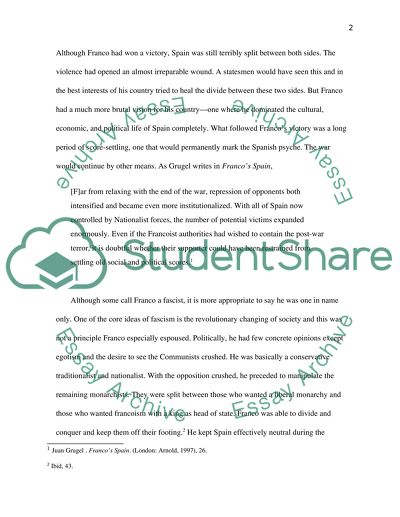Analyse the political and economic changes in the Franco Regime Essay. Retrieved from https://studentshare.org/miscellaneous/1552191-analyse-the-political-and-economic-changes-in-the-franco-regime-between-1939-and-1975
Analyse the Political and Economic Changes in the Franco Regime Essay. https://studentshare.org/miscellaneous/1552191-analyse-the-political-and-economic-changes-in-the-franco-regime-between-1939-and-1975.


